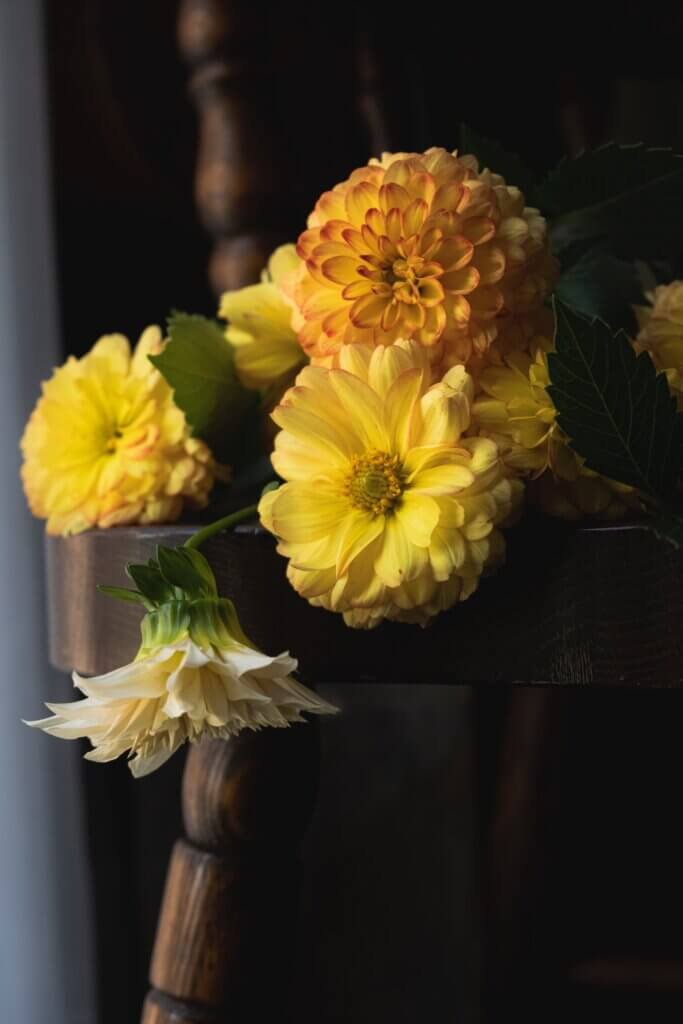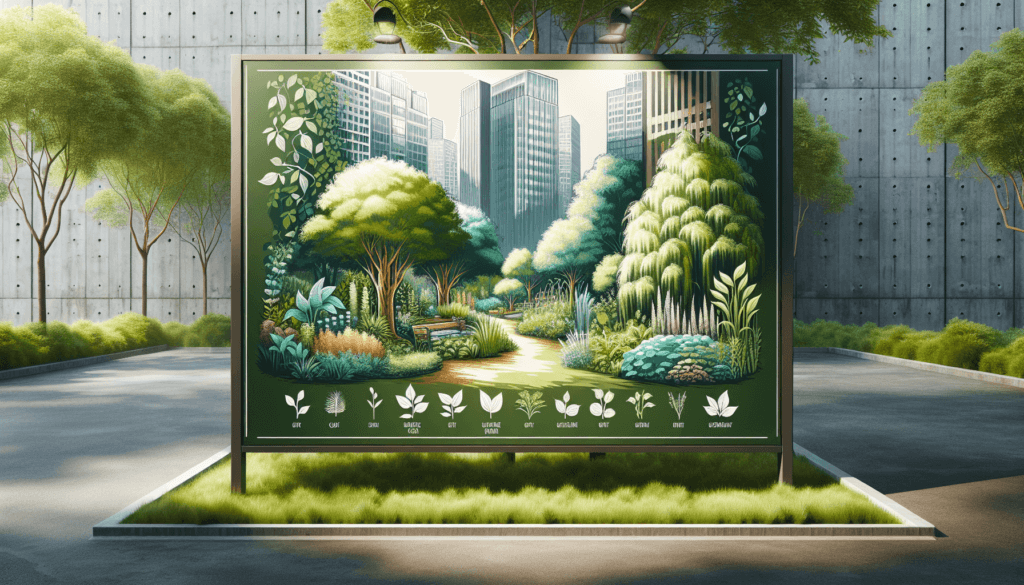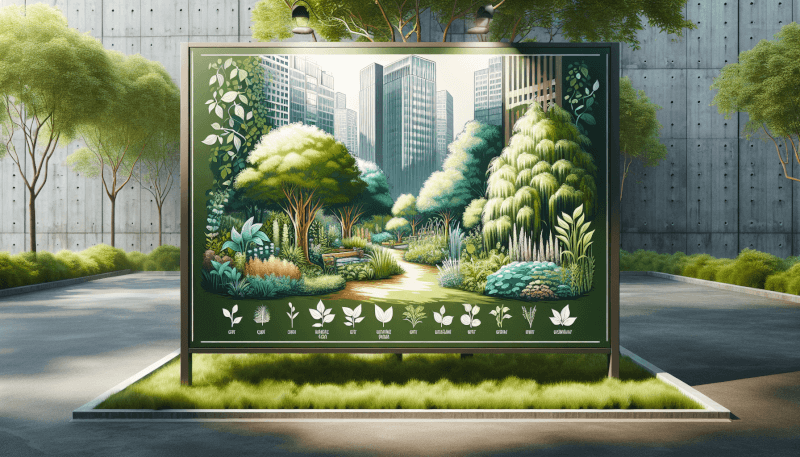If you’re an urban gardener looking to add some greenery to your shaded space, we’ve got you covered. In this article, we’ll be sharing the top 5 shade-tolerant plants that are perfect for urban environments. Whether you have a small balcony or a limited sunlight area in your backyard, these plants will thrive and bring life to your urban oasis. So get ready to transform your shady corner into a lush and vibrant garden with these fantastic plant options.

Hostas
Hostas are a popular choice for urban gardeners looking to add some greenery to shady spots. These plants are known for their large, lush leaves that come in various shades of green. They are easy to care for and can thrive in the shade, making them a perfect addition to any urban garden. Hostas also produce lovely flowers that bloom in the summertime, adding a touch of color to your garden. Whether you want to create a vibrant garden or simply add some texture to your outdoor space, hostas are an excellent choice.
Choosing the Right Hostas
When it comes to choosing hostas for your urban garden, there are a few factors to consider. First, think about the size of your garden and the available space. Hostas come in various sizes, ranging from tiny to giant, so you can find one that fits your garden perfectly. Additionally, consider the color and texture of the leaves. Hostas come in a range of shades, including blue, green, and yellow, as well as different leaf shapes and patterns. Choose the ones that complement your overall garden design and personal style.
Caring for Hostas
Taking care of hostas is relatively easy. These plants thrive in moist soil, so make sure they receive enough water, especially during dry spells. Mulching around the plants can help retain moisture and keep the soil cool. Hostas prefer partial shade, so make sure they are not exposed to direct sunlight for long periods. If your plants become overgrown, you can divide them in the spring to create new plants and maintain their health. Overall, hostas are low-maintenance plants that provide beautiful foliage for your urban garden.
Ferns
Ferns are another great choice for urban gardeners looking to add some greenery to their shade-filled spaces. These ancient plants have been around for millions of years and are well-adapted to growing in shady environments. Ferns come in various shapes and sizes, from delicate, lacy fronds to large, robust leaves. Their unique appearance adds a touch of elegance to any garden, making them a favorite among urban gardeners.
Popular Fern Varieties
There are numerous fern varieties to choose from, and each brings its own unique charm to your garden. The Boston Fern, with its arching fronds and vibrant green color, is a classic choice that can thrive in both indoor and outdoor settings. The Maidenhair Fern is valued for its delicate, lacy foliage and adds an airy feel to any garden. For a more dramatic look, consider the Japanese Painted Fern, which features silvery fronds with purple highlights. Whichever fern variety you choose, you can be sure it will add a touch of beauty to your urban garden.
Growing Ferns
Ferns are relatively low-maintenance plants, making them perfect for busy urban gardeners. They prefer well-draining soil that is kept consistently moist, but not soggy. Regular watering is essential, especially during dry periods. As for light levels, ferns thrive in dappled shade or indirect light, so make sure they are not exposed to direct sunlight. Adding a layer of mulch around the base of the plants can help retain moisture and keep the soil cool. With the right care, your ferns will flourish and bring life to your shady garden spaces.
Coral Bells
Coral Bells, scientifically known as Heuchera, are prized for their beautiful foliage and versatility in urban gardens. These plants come in a wide range of leaf colors, from vibrant greens and yellows to deep purples and reds. Some varieties even feature unique patterns and textures, adding visual interest to your garden. Coral Bells can tolerate shade but can also handle some sun, making them ideal for urban gardeners who have areas with varying light conditions.
Choosing the Perfect Coral Bells
With so many Coral Bell varieties to choose from, it can be challenging to decide which ones are right for your urban garden. Consider the overall color scheme of your garden and choose Coral Bells that complement it. If you prefer a more monochromatic look, opt for varieties with leaves in varying shades of the same color. For a bolder statement, mix and match different colors and patterns. Additionally, consider the size and shape of the plants, as Coral Bells can range from compact mounds to sprawling forms.
Caring for Coral Bells
Coral Bells are relatively easy to care for, making them a favorite among urban gardeners. These plants prefer well-draining soil that is kept consistently moist. Water them regularly, especially during dry periods, and avoid allowing the soil to dry out completely. While Coral Bells can tolerate shade, they also appreciate some sun exposure, so make sure they receive a few hours of indirect sunlight each day. Deadheading the flowers can promote new blooms, while removing any damaged or discolored leaves will keep the plants looking their best.
Astilbes
Astilbes are beautiful perennial plants that thrive in shade and add texture to your urban garden. These plants feature fluffy, feathery flowers in various shades of pink, red, purple, and white, which bloom in the summer and create a vibrant display. The foliage is equally striking, with deep green leaves providing a lush backdrop for the flowers. Astilbes are perfect for adding color and interest to shady spots in your garden, making them a must-have for urban gardeners.
Astilbe Varieties
There are numerous astilbe varieties to choose from, each with its own unique characteristics. The Fanal variety, with its vibrant red flowers, is a popular choice for adding a bold splash of color to your garden. If you prefer a softer look, consider the Bridal Veil variety, which features delicate white flowers that look like cascading waterfalls. The Deutschland variety offers large, white plumes that brighten up shady corners. With so many options, you can find the perfect astilbe varieties to suit your urban garden design.
Growing and Maintaining Astilbes
Astilbes are relatively low-maintenance plants, making them a great choice for urban gardeners. They prefer moist, well-draining soil, so make sure to water them regularly, especially during dry periods. Mulching around the plants can help retain moisture and control weeds. Astilbes thrive in partial shade and can tolerate some sun exposure, although too much direct sunlight can be detrimental. Deadheading the spent flowers can encourage new blooms. Additionally, dividing the plants every few years will help maintain their health and vigor.

Japanese Forest Grass
Japanese Forest Grass, also known as Hakone grass, is a graceful and versatile plant that adds elegance to any urban garden. This ornamental grass features cascading, bamboo-like foliage in various shades of green, gold, and variegated. The beautiful foliage sways gently in the breeze, creating a calming effect in your garden. Japanese Forest Grass is shade-tolerant, making it an excellent choice for shady spots where other plants may struggle.
Choosing the Right Japanese Forest Grass
When selecting Japanese Forest Grass for your urban garden, consider the available space and the color scheme you want to achieve. This grass comes in various heights and forms, from compact mounds to arching spreads. Choose the one that fits your garden design and complements the surrounding plants. Additionally, think about the color of the foliage. Green varieties are classic and versatile, while gold and variegated varieties add a touch of brightness and visual interest.
Caring for Japanese Forest Grass
Japanese Forest Grass is relatively easy to care for, making it a favorite among urban gardeners. It thrives in moist, well-draining soil, so make sure to water it regularly, especially during dry periods. This grass prefers light shade to filtered sunlight, as too much direct sunlight can scorch the foliage. Adding a layer of mulch around the base of the plants can help retain moisture and control weeds. Japanese Forest Grass is a slow-growing plant and does not require regular pruning. However, removing any dead or damaged foliage will keep the plants looking their best.
Bleeding Hearts
Bleeding Hearts, scientifically known as Lamprocapnos, are stunning shade-tolerant plants that captivate with their unique flower shape. The heart-shaped flowers hang from arching stems, creating a whimsical and romantic atmosphere in your urban garden. These charming plants bloom in the spring and come in various colors, including shades of pink, white, and red. Bleeding Hearts are an excellent choice for adding a touch of elegance and grace to shady areas in your garden.
Popular Bleeding Heart Varieties
There are several Bleeding Heart varieties to choose from, each with its own distinct colors and features. The common Bleeding Heart, with its pink heart-shaped flowers, is a classic and widely-recognized variety. If you prefer a more compact option, consider the fringed bleeding heart, which features delicate, lacy foliage and flowers with fringed edges. For a bold statement, opt for the white Bleeding Heart variety, which stands out against the lush green foliage. Whichever variety you choose, Bleeding Hearts are sure to make a striking addition to your urban garden.
Growing Bleeding Hearts
Bleeding Hearts are relatively easy to grow and care for, making them a popular choice among urban gardeners. They prefer well-draining soil that is kept consistently moist, so regular watering is essential. Mulching around the plants can help retain moisture and control weeds. Bleeding Hearts thrive in partial shade, making them ideal for shady spots in your garden. While they can handle some sun exposure, too much direct sunlight can cause the foliage to wilt. Deadheading the flowers once they fade can encourage new blooms. Additionally, dividing the plants every few years will help maintain their vigor and promote healthy growth.

Lungworts
Lungworts, or Pulmonaria, are shade-tolerant plants that offer unique foliage and vibrant flowers for your urban garden. These plants are valued for their spotted or splashed leaves, which come in various shades of green, silver, and even burgundy. The contrasting leaf patterns provide eye-catching beauty throughout the growing season. In addition to the striking foliage, Lungworts produce delicate flowers that range in color from pink and purple to blue. Lungworts are an excellent choice for adding texture, color, and interest to shady areas in your garden.
Choosing Lungwort Varieties
There are multiple Lungwort varieties to choose from, each with its own distinctive leaf markings and flower colors. The Silver Bouquet variety features silver-spotted leaves that contrast beautifully with the pink flowers. For a bolder statement, consider the Raspberry Splash variety, which offers burgundy-spotted leaves and bright raspberry flowers. The Opal variety stands out with its silver leaves and blue flowers. Choose the Lungwort varieties that speak to your personal taste and suit your urban garden’s overall design.
Growing and Caring for Lungworts
Lungworts are relatively low-maintenance plants, making them perfect for urban gardeners. They thrive in well-draining soil that is kept consistently moist, so make sure to water them regularly, especially in dry periods. Mulching around the plants can help retain moisture and control weeds. Lungworts prefer partial shade and can tolerate full shade, although too much direct sunlight can scorch the foliage. Deadheading the spent flowers can promote new blooms. Additionally, dividing the plants every few years will help maintain their health and prevent them from becoming overcrowded.
Solomon’s Seal
Solomon’s Seal, scientifically known as Polygonatum, is a graceful and resilient plant that adds an elegant touch to any urban garden. These perennial plants typically feature arching stems with pairs of green leaves that create a layered effect. In the spring, Solomon’s Seal produces delicate, bell-shaped flowers that hang beneath the foliage. These flowers come in shades of white or pale pink and add a subtle beauty to your garden. Solomon’s Seal thrives in shade, making it an excellent choice for urban gardeners with limited sunlight.
Choosing and Planting Solomon’s Seal
When selecting Solomon’s Seal for your urban garden, consider the available space and the desired height of the plants. Some varieties can grow quite tall, while others are more compact. Choose the one that fits your garden and complements other plants in the vicinity. Plant Solomon’s Seal in well-draining soil that is kept consistently moist. Mulching around the base of the plants can help retain moisture and control weeds. These plants prefer partial to full shade, making them perfect for the shady areas of your garden.
Caring for Solomon’s Seal
Solomon’s Seal is a relatively low-maintenance plant, making it a favorite among urban gardeners. Regular watering is essential, especially during dry spells, as these plants prefer moist soil. However, be cautious of overwatering, as excessive moisture can lead to root rot. Adding a layer of mulch around the plants can help retain moisture and suppress weed growth. Solomon’s Seal can tolerate some sun but prefers shady conditions. Removing any dead or damaged foliage will keep the plants looking their best. With proper care, Solomon’s Seal will thrive and add beauty to your urban garden.

Hellebores
Hellebores, also known as Lenten Roses, are shade-tolerant plants that provide beautiful flowers during the winter and early spring months. These plants are valued for their evergreen foliage and lovely blooms, which come in various colors, including white, pink, purple, and even green. Hellebores’ flowers are unique, with a nodding habit that adds elegance and charm to your urban garden. These plants are perfect for brightening up shady areas when many other plants are dormant.
Popular Hellebore Varieties
Hellebores come in numerous varieties, each with its own distinct flower colors and forms. The Christmas Rose variety is a popular choice for its white or pale pink blooms that appear in the winter. For a more vibrant display, consider the Lenten Rose variety, which offers a range of flower colors, including shades of purple, pink, and even green. The Double Ellen series is known for its double-flowered varieties, adding a touch of luxury to your garden. With so many options, you can find the perfect Hellebore varieties to suit your urban garden’s style.
Growing Hellebores
Hellebores are relatively easy to grow and care for, making them a favorite among urban gardeners. They prefer well-draining soil that is rich in organic matter. Regular watering is essential, especially during dry spells, as Hellebores do not tolerate dry conditions well. Mulching around the plants can help retain moisture and control weed growth. These plants thrive in partial shade and can handle some sun exposure. Deadheading the spent flowers can promote new blooms, while removing any damaged or discolored foliage will keep the plants looking their best.
Impatiens
Impatiens are versatile and shade-tolerant plants that are incredibly popular among urban gardeners. These annual plants offer a burst of color to your urban garden with their vibrant flowers, which come in various shades of pink, white, purple, and red. Impatiens are known for their ability to bloom continuously, providing a stunning display throughout the summer months. Whether you want to add some color to a shady flower bed or brighten up a container garden, Impatiens are an excellent choice.
Choosing Impatiens Varieties
Impatiens come in numerous varieties, each with its own flower colors and growth habits. The New Guinea Impatiens variety offers vibrant flowers in shades of pink, red, and orange, as well as variegated foliage. The Double Impatiens variety features double flowers that add a touch of luxury and elegance to your garden. For a more compact option, consider the Sunpatiens variety, which offers a range of flower colors and can tolerate more sun exposure. Select the Impatiens varieties that best suit your urban garden design and preferences.
Growing and Maintaining Impatiens
Impatiens are relatively easy to grow and care for, making them a popular choice among urban gardeners. They prefer well-draining soil that is kept consistently moist. Watering is essential, especially during dry spells, as Impatiens do not tolerate drought well. Mulching around the plants can help retain moisture and control weeds. These plants thrive in partial to full shade, as too much direct sunlight can scorch the foliage and hinder flower production. Deadheading the spent flowers can promote new blooms. Additionally, regular fertilization can help sustain healthy growth and vibrant flower color.
In conclusion, when it comes to adding greenery and color to your shady urban garden, there are plenty of shade-tolerant plant options to choose from. Hostas, ferns, coral bells, astilbes, Japanese forest grass, bleeding hearts, lungworts, Solomon’s Seal, hellebores, and impatiens are all excellent choices that thrive in the shade. Each plant brings its own unique beauty and characteristics to your urban garden, whether it’s the large and lush leaves of hostas or the delicate flowers of hellebores. With the right selection and proper care, you can transform your shady urban space into a vibrant and enchanting garden. Happy gardening!



